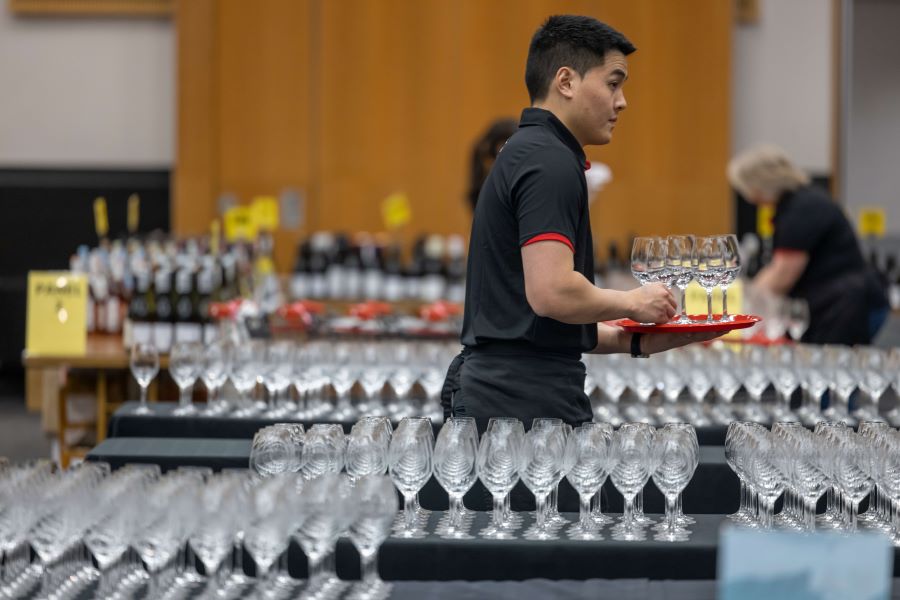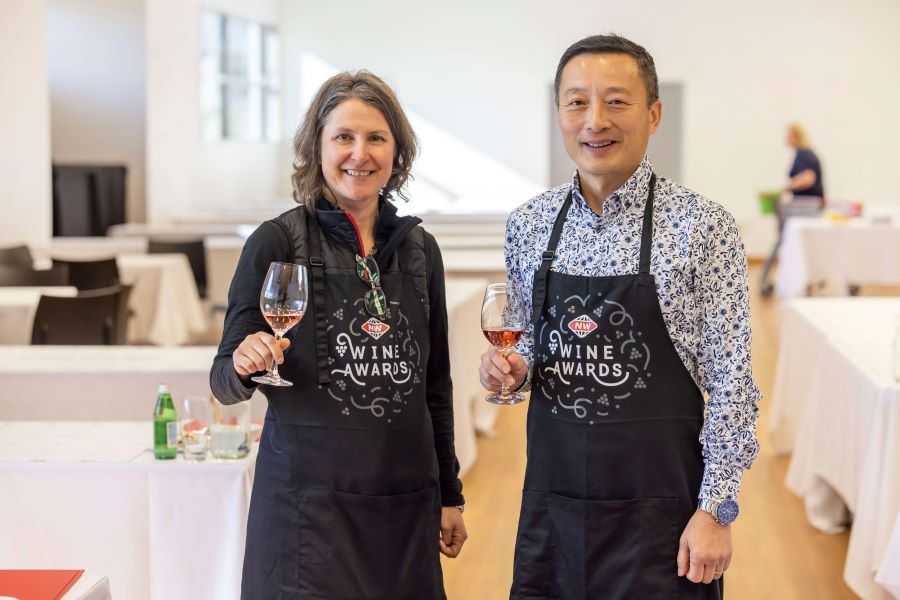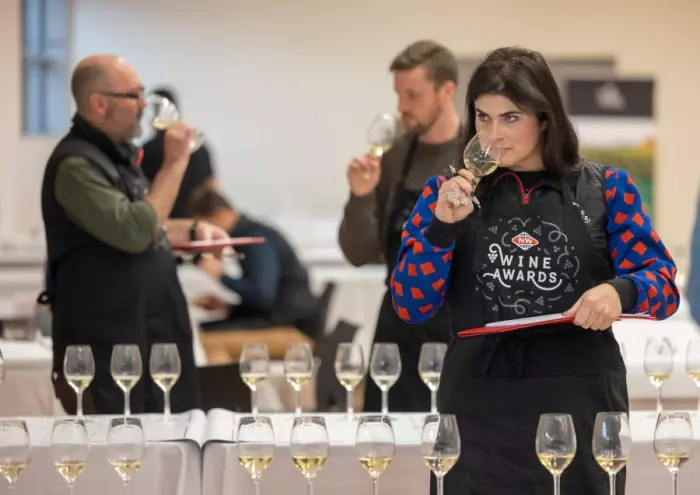In Blenheim's Marlborough Convention Centre, 18 independent wine judges from around New Zealand meet over three crisp July days to answer the arguably tough question, “What are New Zealand's best wines?”
The annual New World Wine Awards help to answer that. A combination of experienced judges, winemakers, academics and experts offer their time to swirl, sniff, sip and spit their way through more than 1400 entries. Just 50 of the best are then chosen from the gold- and silver-winning wines, and it is from them that the category winners, priced under $25, are selected.
To get to this point takes an enormous amount of organisation. More than 4400 bottles are first organised in a back room that is strictly off-limits to the judges so they aren't influenced by previous experiences with a wine they may recognise. The judging starts with over 1000 poured glasses of sauvignon blanc, and the air is thick with the aroma of the wine.
 Back of house set-up at the wine awards judging.
Back of house set-up at the wine awards judging.
The organisers are proud of their “supremely robust” double-blind process and there is method to their madness. Labelled with a three-number code, wines are tagged in the back room to indicate which judging panel will receive which particular entry, poured and carried out in flights of 15 to 20 different wines per variety per judge.
The judges are divided into five panels, who don't taste the same wines – this spares their palates from becoming fatigued. On hand is plenty of water and plain water crackers to keep them steady, and green olives are brought out during the red-wine tasting to neutralise their taste buds. The judges sure aren't swallowing all that wine, either – they've mastered the knack of spitting fountain-esque into a spittoon.
They score wines using the world-recognised 100-point system and determine which should receive a gold, silver or bronze medal, or none at all. Once a flight has been judged by all those on a panel, they convene to discuss which wines have made the gold and silver benchmark to be recalled for a second blind tasting.
The stewards then replace the three-number code for each wine with a three-letter code, in order to remove the risk that a judge may recognise a number code from the earlier tasting.
After round two, the wines are given a single-letter code for the co-chairs of the awards, who determine the very best wine for each variety or category.
This year’s first-time co-chairs, Sam Kim from the review website Wine Orbit and the 2020 New Zealand Winemaker of the Year, Jennifer Parr, are expecting great wines and great variability from the 2021 vintage.
“There is an exciting buzz in the room,” says Kim, who has 25 years of international judging experience. “The 2021 aromatics are a terrific vintage.” Pinot noir and syrah are also expected to be great wines this year.
So, what makes a wine a winner? Parr, who is based at Valli Vineyards in Central Otago, says that with any wine, flavour and freshness are vital. “It’s interest – when you have a wine that makes you go, ‘Oh’, and it stops you in the moment.”
Kim agrees the initial impression is key. “Like anything – food, clothes – sometimes you just immediately like it. You want to think, ‘Ah, this is good’.”
 Wine awards co-chairs Jennifer Parr and Sam Kim.
Wine awards co-chairs Jennifer Parr and Sam Kim.
And for the best wine experience, they say, start by smelling it. “A lot of what you take in is through the nose,” says Parr. “Start with a sniff, then you taste. If you start by smelling it, you’re going to enjoy it much more.”
This is the first year judges are scoring zero-alcohol wines in their own category, as well as gold-winning wines over $25 promoted in New World’s Premium New Zealand Selection during the Christmas season.
Placement in the top 50, or even earning a label sticker, is a huge victory for a winemaker. Winning varieties sell out in weeks instead of the often-usual six months. “Gold gives huge exposure for companies, especially small and family-owned wineries,” says Kim. It reinforces a brand in the minds of consumers and allows the label to become one they can trust. “It's a great avenue to get instant exposure.”
Having won many industry accolades, Parr knows what it is like for industry players to have their wines judged by the best. “It means something different to different companies, but there is definitely a positive commercial reality for the winemakers.” It's also a great measure of feedback from their industry peers, that judges and consumers alike are impressed by what the winning companies are doing. “It's worth putting your wine out there for feedback. They see a direct impact in sales and notoriety from it.”
With so many stickers adorning bottles these days, it can be hard to know which are meaningful or trustworthy.
The judges’ experience and backgrounds differ vastly, yet they all come to the same conclusions on selecting the best wines for the top 50. Says Kim: “At the end of the day, we’re consumers, too. We just do the hard work.”
Full results of the New World Wine Awards winners will be announced in October.













